#stuart carroll
Explore tagged Tumblr posts
Text
"Purging the body politic of undue Guise influence"
The relationship between the duke and the king during the next three years was complex. Henry was far too clever to try to provoke or humiliate the Guise, but his desire to effect a fundamental transformation of the court and the kingdom would inevitably mean tackling vested interest groups. The king wanted to keep Guise at court so he could keep an eye on him, and to this end extended his generosity. Likewise, the traditional picture of Guise as a man driven by ambition, cynically manipulating the opposition to undermine the king does not hold. Only slowly, almost imperceptibly at first, would the duke find himself undermined and his pride damaged.

Henry III was fastidious and paid much attention to etiquette. He made significant changes to the structure of the court designed to break the Guise monopoly on high office. The Grand Master of the Household ‘the first and cheifest office and dignitie’, as the Englishman Richard Cooke described it, had been in the hands of the Guise since 1559, and Cooke saw the duke perform the role:
When the king maketh a great dynner with solempnitie & ceremonie, it is his charge to serve in person as stewarde and master of the house with a white staffe in his hande, & must go before the meate which is served at the King’s table . . . [he] hath by virtue of his office the greatest allowance and the greatest table in the Court, that is for fowre & twentie persons, and to his table doe come ordinarily many younge noble men & others makinge profession of armes. And this table is allwaies covered whilest the King dynethe.
A great privilege certainly. But Cooke was unaware that the control of the Grand Master over the court had been weakened in 1578 by the creation of a new official, the Grand Provost (grand prévot de l’hôtel), who was given responsibility for the policing of the court. It was entrusted to a mignon, François du Plessis, the father of Cardinal Richelieu. The same happened to the post of Grand Ecuyer. When this was in danger of falling into Guise hands, Henry diluted its authority over the royal stables by creating a new institution, the Petite Ecurie.
Purging the body politic of undue Guise influence was not just a question of bureaucratic organization; it was one of style. Those who did not share the king’s intellectual pursuits felt left out; his disdain for traditional aristocratic pastimes hit the Guise particularly hard. Charles d’Aumale was Master of the King’s Hunt, a post that, during the previous reign, had given his father control of 340 staff and a budget of 70,000 livres per annum, but Henry III rarely hunted and expenditure fell to 24,500 livres in 1584. Aumale was forced to sell land in order to make ends meet. Kings of France had traditionally lived their lives in public and been accessible to their subjects. Henry III followed the English model and took steps to restrict access thus ‘avoiding the confusion that continually takes place in his chambers, where everyone without distinction wishes to enter without the ushers being able to stop them’. He and the Guise were seen together much on public occasions, but real business was increasingly conducted in private. In 1581, the king, against the advice of his mother felt confident enough to establish a secret inner council. This was associated with the rise of two men from the pack of mignons, Jean-Louis de la Valette and Anne de Joyeuse, to positions of pre-eminence at court. They emerged as the principal ministers in the new cabinet. Henry set about turning these men, from the modest southern nobility, into great magnates, straining his relationship with the Guise to breaking point.
Guise had little to complain of publicly: he was regularly seen with the king; his pension and salaries were paid on time; he directly benefited from innovative and unpopular taxes. In the summer of 1581 he was awarded a gift of 200,000 livres, part of his cut from nine new fiscal edicts registered that summer, which enabled him to pay off many debts. But this was a sweetener to prepare him for his political exclusion. In September the viscounty of Joyeuse was raised to a duchy and negotiations opened with Mayenne to resign the office of Admiral of France. The king arranged Joyeuse’s marriage to the queen’s sister, Marguerite de Lorraine; and, once again, Guise could hardly complain, as Marguerite was his cousin. A deal was struck: Mayenne resigned the admiralty to Joyeuse for 360,000 livres, in return for which the marquisate of Elbeuf was created a duchy. Guise appeared for the marriage, where only the painting we have investigated records his displeasure at the extraordinary favour displayed to Joyeuse, who was given a gift of 1.2 million livres. The festivities, called ‘Magnificences’ lasted for two weeks, and stunned contemporaries with their sumptuousness. Even Pierre de l’Estoile, who was among the 50,000 spectators at one of the parades, was grudgingly impressed in his journal. And the king did not stop there. On New Year’s Day 1582, Joyeuse and Epernon were appointed as alternating First Gentlemen of the Privy Chamber: henceforth no one could leave or enter the king’s apartments without their consent. Resistance to the palace revolution coalesced around the figure of la Valette, who became Duke of Epernon in November 1581. His rise was even more remarkable than that of Joyeuse. During the 1580s he would accumulate something in the region of 3 million livres in salaries, pensions, and royal gifts, putting into perspective the crumbs with which Guise had to be content. While Joyeuse took care of the navy, Epernon was charged with reasserting royal control in the army; in July 1582 he became colonel-general of the infantry and was named commander of many important garrison towns, most notably Metz, from where he could keep an eye on the duchy of Lorraine.
Stuart Carroll - Martyrs and Murderers : the Guise Family and the Making of Europe
#xvi#stuart carroll#martyrs and murderers: the guise family and the making of europe#henri iii#henri i de guise#françois du plessis de richelieu#jean-louis de la valette#anne de joyeuse#charles i d'aumale#marguerite de lorraine
6 notes
·
View notes
Text




The Whistler (1944) William Castle
June 8th 2024
#the whistler#1944#william castle#richard dix#j. carrol naish#gloria stuart#alan dinehart#robert emmett keane#robert homans#otto forrest
8 notes
·
View notes
Text

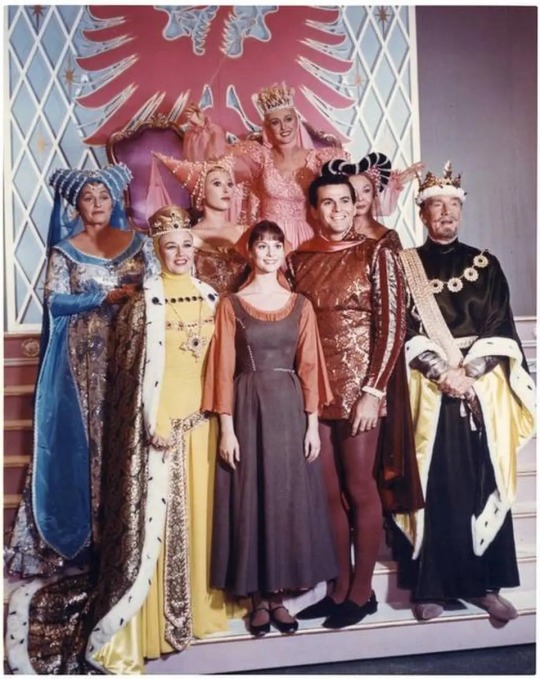

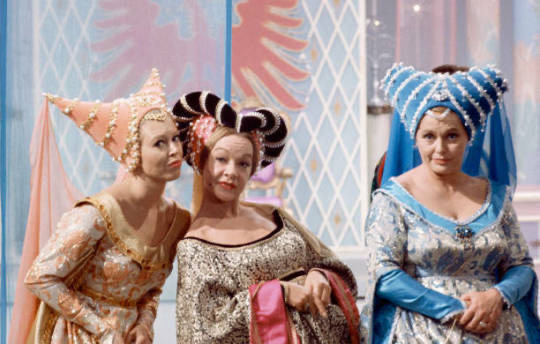

Rodgers & Hammerstein's “Cinderella,” directed by Charles S. Dubin and starring Lesley Ann Warren and Stuart Damon, with Ginger Rogers, Walter Pidgeon, Pat Carroll, Jo Van Fleet, Barbara Ruick, and Celeste Holm, premiered on CBS-TV #OnThisDay in 1965.
58 notes
·
View notes
Text
My top three favorite pieces of random author drama, in no particular order:
Anne Rice's feud with the owner of Popeye's Chicken because the latter put a big gaudy restaurant on the used car lot where Lestat died
That time Nora Roberts popped off at a commenter on her blog who was complaining that the sequel to one of her books wasn't coming out fast enough and tried to fan-splain the publishing process to her
The most influential children's librarian in American history pushing really hard to get E.B. White to write Stuart Little, then making a complete 180 on it once she read it and trying to keep it from getting published
47 notes
·
View notes
Text










There was a brief pause, but she punctured it with a booming, "OH! I MUST TELL YOU ABOUT ANOTHER SHOW! I just finished taping 'Cinderella' with Walter Pidgeon, Ginger Rogers, Jo Van Fleet, and Celeste Holm and two young people who are sure to become big stars- Lesley Warren and Stuart Damon. The program is a special to be shown February 22nd. CBS got its color cameras out of mothballs to do the show, and I think they did a beautiful job. They should have. I think they spent about $500,000 on it. It took us five days to tape the show, and we worked nine days altogether, counting rehearsals. Once the crew worked 38 hours straight. That's a very long time to do a television show, and when we were through, the program became known as the children's 'Cleopatra.'"
RODGERS AND HAMMERSTEIN'S CINDERELLA Pat Carroll, 1965
#userdeforest#pat carroll#cinderellaedit#tlmedit#thelittlemermaidedit#rodgers and hammerstein's cinderella#cinderella 1965#oldhollywoodedit#classicfilmedit#classicfilmsource#classicfilmblr#filmgifs#filmdaily#userfilm#gif#gif: pat carroll#gif: cinderella 1965#gif: rodgers and hammerstein's cinderella 1965#this footage is in SUCH low quality and it's so hard to color#but!#pat has never had true big gifs for herself so here you go <3#tagging tlm bc pat was the original ursula
222 notes
·
View notes
Text
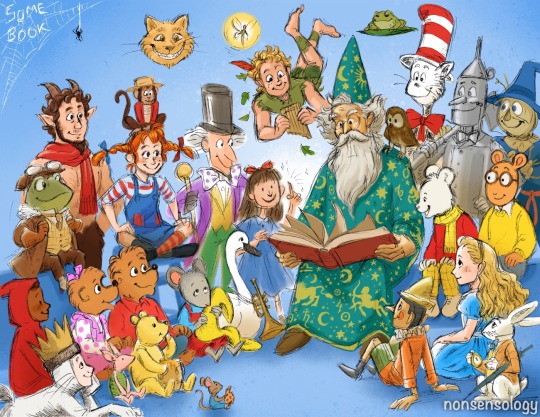
This was supposed to just be a rough sketch, but then I started getting really invested in it.
I hadn't initially intended to include so many picture book characters, but the nostalgia was overwhelming. Does anyone remember the animated short films produced by Weston Woods? My local library used to have a bunch of them on the Scholastic VHS tapes from the late 90s. (I know some shorts were released on the Children's Circle VHS tapes back in the 80s (🎶 Come on along! Come on along! Join the caravan!), and some were packaged in Sammy's Story Shop in 2008.)
Characters:
Max, from Where the Wild Things Are, written and illustrated by Maurice Sendak
Peter, from The Snowy Day, written and illustrated by Ezra Jack Keats
Brother Bear and Sister Bear, from The Berenstain Bears series, written and illustrated by Stan and Jan Berenstain
Pooh and Piglet, from the Winnie-the-Pooh books, by A. A. Milne, illustrated by E. H. Shepard
Owen, from Owen, written and illustrated by Kevin Henkes.
Mouse, from If You Give a Mouse a Cookie, by Laura Joffe Numeroff, illustrated by Felicia Bond
Louis, from The Trumpet of the Swan, by E. B. White
Mr. Toad, from The Wind in the Willows, by Kenneth Grahame, based on the illustrations by E. H. Shepard
Mr. Tumnus, from The Chronicles of Narnia series, by C. S. Lewis
Pippi and Mr. Nilsson, from the Pippi Longstocking books, by Astrid Lindgren
Willy Wonka, from Charlie and the Chocolate Factory, by Roald Dahl, based on the illustrations by Quentin Blake
Matilda, from Matilda, by Roald Dahl, based on the illustrations by Quentin Blake (with an homage to the Mara Wilson movie)
Peter Pan and Tinker Bell, from Peter Pan, by J. M. Barrie
Merlin and Archimedes, from The Sword in the Stone, by T. H. White, based on the illustrations by Dennis Nolan
Pinocchio, from Pinocchio, by Carlo Collodi, based on the illustrations by Enrico Mazzanti
Alice, White Rabbit, and Cheshire Cat, from Alice's Adventures in Wonderland, by Lewis Carroll, illustrated by John Tenniel
Rupert Bear, from the Rupert stories, created by Mary Tourtel and continued by Alfred Bestall, John Harrold, Stuart Trotter, and others.
Arthur Read, from the Arthur series, written and illustrated by Marc Brown
Tin Woodman and Scarecrow, from the Land of Oz series, by L. Frank Baum, based on the illustrations by W. W. Denslow and John R. Neill
The Cat in the Hat, from The Cat in the Hat, written and illustrated by Dr. Seuss
a frog on a flying lily pad, from Tuesday, written and illustrated by David Wiesner
Charlotte, from Charlotte's Web, by E. B. White
#illustration#children's books#children's literature#where the wild things are#the snowy day#berenstain bears#winnie the pooh#kevin henkes#if you give a mouse a cookie#e b white#the wind in the willows#pippi longstocking#the chronicles of narnia#roald dahl#peter pan#sword in the stone#pinocchio#rupert bear#arthur read#alice's adventures in wonderland#the wonderful wizard of oz#cat in the hat#david wiesner
586 notes
·
View notes
Text
THE TOURNAMENT IS OVER! Eartha Kitt lounges in her deck chair in the sun, dipping her toes in the pool with Toshiro Mifune and sipping a brightly colored fruity something with an umbrella in it.
Far below in the shadow realm, however, the fallen hotties dance in the dark—let's take a minute to look back at them under the cut.
PRELIM PRETTIES:
Claude Gensac, Silvia Pinal, Ewa Aulin, Rita Tushingham, Annette Funicello, Norma Bengell, Catherine Spaak, Brigitte Auber, Micheline Presle, Nanette Fabray, Libertad Lamarque, Vera Miles, Martha Raye, Catherine McLeod, Virginia Mayo, Elizabeth Allan, Belle Bennet, Virginia Cherill, Mary Brian, Ruth Chatterton, Agnes Ayres, Merna Kennedy, Marie Prevost, Corinne Griffith, May Allison, Virginia Brown Faire, Alice Brady, and Jetta Goudal
ROUND ONE WONDERS:
Angie Dickinson, Thelma Ritter, Geraldine Chaplin, Evelyn Preer, Vanessa Brown, Betty Blythe, Susan Hayward, Mae Clarke, Sally Ann Howes, Ossi Oswalda, Adrienne La Russa, Hermione Gingold, Barbara Bouchet, Melina Mercouri, Anna Karina, Edwige Fenech, Charmian Carr, Pina Pellicer, Marlène Jobert, Tsuru Aoki, Alice Roberts, Leila Hyams, Lady Tsen Mei, Geneviève Bujold, Dolores Hart, Anita Berber, Bonita Granville, Vonetta McGee, Claire Windsor, Zizi Jeanmaire, Tuesday Weld, Grace Darmond, Carol Channing, Deanna Durbin, Laraine Day, Mariette Hartey, Wendy Hiller, Candy Darling, Hermione Baddely, Valeria Creti, Ella Raines, Ann Miller, Dana Wynter, Dalida, Martine Beswick, Gale Storm, Simone Signoret, Cristina Gaioni, Mabel Normand, Stéphane Audran, Ruth Weyher, Anna Wiazemsky, Ann Sheridan, Sandhya Shantaram, Alice White, Anne Francis, Gena Rowlands, Lyda Borelli, May Whitty, Cathleen Nesbitt, Jessica Walter, Virna Lisi, Barbara Shelley, Iris Hall, Heather Angel, Anne Shirley, Joanna Pettet, Virginia O'Brien, Joan Collins, Greer Garson, Gracie Allen, Peggy Ryan, Frances Dee, Shirley Maclaine, Geraldine Farrar, Kathleen Byron, Margaret Hamilton, Eva Gabor, Francesca Bertini, Julie Adams, Olga Baclanova, Misa Uehara, Yvette Vickers, Milena Dravić, Jenny Jugo, Madeleine Carroll, Benita Hume, Olive Borden, Shirley Jones, Miyoshi Umeki, Dorothy Lamour, Gale Sondergaard, Mary Anderson, Charlotte Greenwood, Sybil Seely, Mona Barrie, Kathryn Grayson, Katharine Ross, Madge Bellamy, Rhonda Fleming, Sally Gray, Jana Brejchová, Debra Paget, Madame Sul-Te-Wan, Evelyn Brent, Zelma O'Neal, Marie Laforêt, Türkan Şoray, Beatriz Costa, Irene Zazians, Eleanor Powell, Susan Luckey, Patsy Kelly, Lil Dagover, Norma Talmadge, Dorothy Mackaill, Madge Evans, Virginia McKenna, Amália Rodrigues, Mamie Van Doren, Valerie Hobson, Isabel Jeans, Beata Tyszkiewicz, Claire Luce, Aleksandra Khokhlova, Nieves Navarro Garcia, Janet Leigh, Carmen Miranda, Jean Harlow, Aud Egedge-Nissen, Nina Foch, Jean Simmons, Piper Laurie, Katy Jurado, Jayne Mansfield, Anita Garvin, Frances Farmer, Lizabeth Scott, Joan Greenwood, Una Merkel, Arlene Francis, Ethel Merman, Doris Day, Suzanne Pleshette, Ruta Lee, Carolyn Jones, June Richmond, Eva Nil, Diana Dors, Anna Chang, Colleen Moore, Alexis Smith, Yvette Mimieux, Ruby Keeler, Viola Dana, Dolores Grey, Marie Windsor, Danielle Darieux, Jean Parker, Julie Christie, Acquanetta, Leatrice Joy, Ghita Nørby, Julie Newmar, Joanne Woodward, Sandra Dee, Eva Marie Saint, Simone Simon, Katherine Dunham, Birgitte Price, Lee Grant, Anita Page, Flora Robson, Martha Sleeper, Elsie Ames, Isabel "Coca" Sarli, Glenda Farrell, Kathleen Burke, Linden Travers, Diane Baker, Joan Davis, Joan Leslie, Sylvia Sidney, Marie Dressler, June Lockhart, Emmanuelle Riva, Libertad Leblanc, Susannah Foster, Susan Fleming, Dolores Costello, Ann Smyrner, Luise Rainer, Anna Massey, Evelyn Ankers, Ruth Gordon, Eva Dahlbeck, Ansa Ikonen, Diana Wynyard, Patricia Neal, Etta Lee, Gloria Stuart, Arletty, Dorothy McGuire, Mitzi Gaynor, Gwen Verdon, Maria Schell, Lili Damita, Ethel Moses, Gloria Holden, Kay Thompson, Jeanne Crain, Edna May Oliver, Lili Liliana, Ruth Chatterton, Giulietta Masina, Claire Bloom, Dinah Sheridan, Carroll Baker, Brenda de Banzie, Milú, Hertha Thiele, Hanka Ordonówna, Lillian Roth, Jane Powell, Carol Ohmart, Betty Garrett, Kalina Jędrusik, Edana Romney, Geraldine Fitzgerald, Kay Kendall, Ruth Hussey, Véra Clouzot, Jadwiga Smosarska, Marge Champion, Mary Astor, Ann Harding, María Casares, Maureen O'Sullivan, Mildred Natwick, Michèle Morgan, Romy Schneider, Elisabeth Bergner, Celeste Holm, Betty Hutton, Susan Peters, Mehtab, Leslie Caron, Anna Sten, Janet Munro, Nataša Gollová, Eve Arden, Ida Lupino, Regina Linnanheimo, Sonja Henie, and Terry (what a good girl)
ROUND TWO BEAUTIES:
Evelyn Nesbit, Thelma Todd, Tura Satana, Helen Gibson, Maureen O'Hara, Rocío Dúrcal, Mary Nolan, Lois Maxwell, Maggie Smith, Zulma Faiad, Ursula Andress, Musidora, Delphine Seyrig, Marian Marsh, Leatrice Joy, Sharon Tate, Pina Menichelli, Teresa Wright, Shelley Winters, Lee Remick, Jane Wyman, Martita Hunt, Barbara Bates, Susan Strasberg, Marie Bryant, Diana Rigg, Jane Birkin, Rosalind Russell, Vanessa Redgrave, Brigitte Helm, Gloria Grahame, Rosemary Clooney, Bebe Daniels, Constance Bennett, Lilian Bond, Ann Dvorak, Jeanette Macdonald, Pouri Banayi, Raquel Welch, Vilma Bánky, Dorothy Malone, Olive Thomas, Celia Johnson, Moira Shearer, Priscilla Lane, Dolores del Río, Ann Sothern, Françoise Rosay, June Allyson, Carole Lombard, Jeni Le Gon, Takako Irie, Barbara Steele, Claudette Colbert, Lalita Pawar, Asta Nielsen, Sandra Milo, Maria Montez, Mae West, Alma Rose Aguirre, Bibi Andersson, Joan Blondell, Anne Bancroft, Elsa Lanchester, Nita Naldi, Suchitra Sen, Dorothy Van Engle, Elisabeth Welch, Esther Williams, Loretta Young, Margueritte De La Motte, Ita Rina, Constance Talmadge, Margaret Lockwood, Barbara Bedford, Josette Day, Stefania Sandrelli, Jane Russell, Doris Dowling, Zsa Zsa Gabor, Donna Reed, Ruby Dee, Diana Sands, Billie Burke, Kyōko Kagawa, Françoise Dorléac, Hend Rostom, Monica Vitti, Lilian Harvey, Marjorie Main, Jeanne Moreau, Lola Flores, Ann Blyth, Janet Gaynor, Jennifer Jones, Margaret Sullavan, Sadhana, Ruby Myers, Lotus Long, Honor Blackman, Marsha Hunt, Debbie Reynolds, Michèle Mercier, Irene Dunne, Jean Arthur, Judy Holliday, Tippi Hedren, Susse Wold, Vera-Ellen, Carmelita González, Nargis Dutt, Purnima, Harriet Andersson, Yvonne De Carlo, Miroslava Stern, Sheila Guyse, Helen, Margaret Dumont, Betty Grable, Joan Bennett, Jane Greer, Judith Anderson, Liv Ullman, Vera Zorina, Joan Fontaine, Silvana Mangano, and Lee Ya-Ching
ROUND THREE ELECTRIFIERS:
Jean Hagen, Sumiko Mizukubo, Mary Philbin, Ann-Margret, Margaret Rutherford, Claudia Cardinale, Eleanor Parker, Jessie Matthews, Theresa Harris, Brigitte Bardot, Alla Nazimova, Faye Dunaway, Marion Davies, Anna Magnani, Theda Bara, Myrna Loy, Kay Francis, Fay Wray, Barbra Streisand, Bette Davis, Hideko Takamine, France Nuyen, Claudine Auger, Miriam Hopkins, Maylia Fong, Samia Gamal, Maude Fealy, Machiko Kyō, Sharmila Tagore, Lucille Ball, Ginger Rogers, Juanita Moore, Anna Fougez, Waheeda Rehman, Ruan Lingyu, Nina Mae McKinney, Ethel Waters, Nadira, Olivia de Havilland, Abbey Lincoln, Louise Beavers, Agnes Moorehead, Lana Turner, Norma Shearer, Maria Falconetti, Reiko Sato, Marie Doro, Clara Bow, Margaret Lindsay, Catherine Denueve, Madhabi Mukherjee, Rosaura Revueltas, Hu Die, Mary Pickford, Fredi Washington, Louise Brooks, Leonor Maia, Merle Oberon, Paulette Goddard, Vivien Leigh, Francine Everett, Savitri, Tita Merello, and Meena Kumari
ROUND FOUR STUNNERS:
Judy Garland, Dorothy Dandridge, Yoshiko Yamaguchi, Marilyn Monroe, Irene Papas, Lupe Vélez, Pola Negri, Gene Tierney, Barbara Stanwyck, Gina Lollobrigida, Lena Horne, Nutan, Jean Seberg, Kim Novak, Gladys Cooper, Tallulah Bankhead, Linda Darnell, Julie Andrews, Carmen Sevilla, Gloria Swanson, Glynis Johns, Anne Baxter, Angela Lansbury, Anita Ekberg, Toshia Mori, Deborah Kerr, Hazel Scott, Chelo Alonso, Cyd Charisse, Nancy Kwan, Devika Rani, Shima Iwashita, and Anouk Aimée
ROUND FIVE SMOKESHOWS:
Setsuko Hara, Pearl Bailey, Joan Crawford, Madhubala, Marpessa Dawn, Keiko Awaji, Rita Hayworth, Veronica Lake, Ava Gardner, Greta Garbo, Grace Kelly, Xia Meng, Suraiya, Natalie Wood, María Félix, and Mbissine Thérèse Diop
ROUND SIX SEXY LADIES:
Marilyn Monroe, Sophia Loren, Vyjyanthimala, Jane Fonda, Katharine Hepburn, Josephine Baker, Elizabeth Taylor, and Ingrid Bergman
QUARTER FINALIST GLAMAZONS:
Audrey Hepburn, Marlene Dietrich, Anna May Wong, and Lauren Bacall
SEMIFINALIST ICONS:
Rita Moreno, Diahann Carroll
FINALIST FABULOSITY:
Hedy Lamarr
ULTIMATE CHAMPION OF THE HOT & VINTAGE MOVIE WOMAN TOURNAMENT:
Eartha Kitt
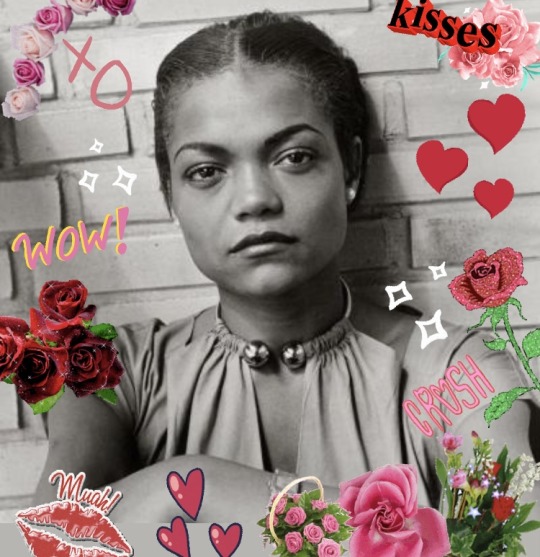
340 notes
·
View notes
Photo
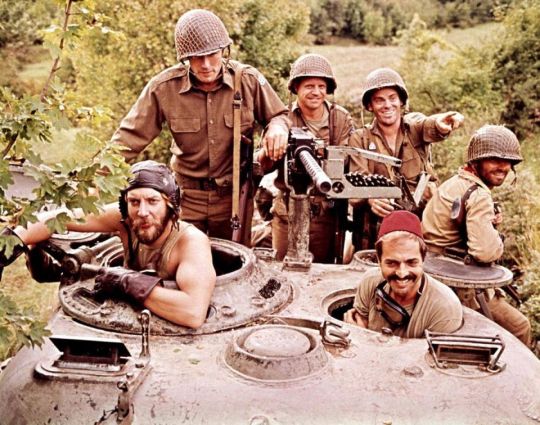
Released June 23, 1970, Kelly's Heroes is an American caper war film directed by Brian G. Hutton and starring Clint Eastwood, Telly Savalas, Don Rickles, Carroll O'Connor, Donald Sutherland, Harry Dean Stanton, Gavin MacLeod, and Stuart Margolin.
542 notes
·
View notes
Note
For a school assignment, I'm assembling an anthology around the theme of queer divinity and desire, but I'm having a hard time finding a fitting essay/article (no access to real academic catalogues :/ ), do you know of any essays around this theme?
below are essays, and then books, on queer theory (in which 'queer' has a different connotation than in regular speech) in the hebrew bible/ancient near east. if there is a particular prophet you want more of, or a particular topic (ištar, or penetration, or appetites), or if you want a pdf of anything, please let me know.
essays: Boer, Roland. “Too Many Dicks at the Writing Desk, or How to Organize a Prophetic Sausage-Fest.” TS 16, no. 1 (2010b): 95–108. Boer, Roland. “Yahweh as Top: A Lost Targum.” In Queer Commentary and the Hebrew Bible, edited by Ken Stone, 75–105. JSOTSup 334. Cleveland, OH: Pilgrim, 2001. Boyarin, Daniel. “Are There Any Jews in ‘The History of Sexuality’?” Journal of the History of Sexuality 5, no. 3 (1995): 333–55. Clines, David J. A. “He-Prophets: Masculinity as a Problem for the Hebrew Prophets and Their Interpreters.” In Sense and Sensitivity: Essays on Reading the Bible in Memory of Robert Carroll, edited by Robert P. Carroll, Alastair G. Hunter, and Philip R. Davies, 311–27. JSOTSup 348. Sheffield: Sheffield Academic Press, 2002. Graybill, Rhiannon. “Yahweh as Maternal Vampire in Second Isaiah: Reading from Violence to Fluid Possibility with Luce Irigaray.” Journal of feminist studies in religion 33, no. 1 (2017): 9–25. Haddox, Susan E. “Engaging Images in the Prophets: Feminist Scholarship on the Book of the Twelve.” In Feminist Interpretation of the Hebrew Bible in Retrospect. 1. Biblical Books, edited by Susanne Scholz, 170–91. RRBS 5. Sheffield: Sheffield Phoenix Press, 2013. Koch, Timothy R. “Cruising as Methodology: Homoeroticism and the Scriptures.” In Queer Commentary and the Hebrew Bible, edited by Ken Stone, 169–80. JSOTSup 334. Cleveland, OH: Pilgrim, 2001. Tigay, Jeffrey. “‘ Heavy of Mouth’ and ‘Heavy of Tongue’: On Moses’ Speech Difficulty.” BASOR, no. 231 (October 1978): 57–67.
books: Ahmed, Sara. Queer Phenomenology: Orientations, Objects, Others. Durham, NC: Duke University Press, 2006. Bauer-Levesque, Angela. Gender in the Book of Jeremiah: A Feminist-Literary Reading. SiBL 5. New York: P. Lang, 1999. Black, Fiona C., and Jennifer L. Koosed, eds. Reading with Feeling : Affect Theory and the Bible. Atlanta, GA: SBL Press, 2019. Brenner, Athalya. The Intercourse of Knowledge: On Gendering Desire and “Sexuality” in the Hebrew Bible. BIS 26. Leiden: Brill, 1997. Camp, Claudia V. Wise, Strange, and Holy: The Strange Woman and the Making of the Bible. JSOTSup 320. Gender, Culture, Theory 9. Sheffield: Sheffield Academic Press, 2000. Chapman, Cynthia R. The Gendered Language of Warfare in the Israelite-Assyrian Encounter. HSM 62. Winona Lake, IN: Eisenbrauns, 2004. Creangă, Ovidiu, ed. Men and Masculinity in the Hebrew Bible and Beyond. BMW 33. Sheffield: Sheffield Phoenix Press, 2010. Eilberg-Schwartz, Howard. God’s Phallus: And Other Problems for Men and Monotheism. Boston: Beacon, 1995. Huber, Lynn R., and Rhiannon Graybill, eds. The Bible, Gender, and Sexuality : Critical Readings. London, UK ; T&T Clark, 2021. Guest, Deryn. When Deborah Met Jael: Lesbian Biblical Hermeneutics. London: SCM, 2005. Graybill, Rhiannon, Meredith Minister, and Beatrice J. W. Lawrence, eds. Rape Culture and Religious Studies : Critical and Pedagogical Engagements. Lanham, Maryland: Lexington Books, 2019. Graybill, Rhiannon. Are We Not Men? : Unstable Masculinity in the Hebrew Prophets. New York, NY: Oxford University Press USA, 2016. Halperin, David J. Seeking Ezekiel: Text and Psychology. University Park: Pennsylvania State University Press, 1993. Jennings, Theodore W. Jacob’s Wound: Homoerotic Narrative in the Literature of Ancient Israel. New York: Continuum, 2005. Macwilliam, Stuart. Queer Theory and the Prophetic Marriage Metaphor in the Hebrew Bible. BibleWorld. Sheffield and Oakville, CT: Equinox, 2011. Maier, Christl. Daughter Zion, Mother Zion: Gender, Space, and the Sacred in Ancient Israel. Minneapolis, MN: Fortress, 2008. Mills, Mary E. Alterity, Pain, and Suffering in Isaiah, Jeremiah, and Ezekiel. LHB/OTS 479. New York: T. & T. Clark, 2007. Stökl, Jonathan, and Corrine L. Carvalho. Prophets Male and Female: Gender and Prophecy in the Hebrew Bible, the Eastern Mediterranean, and the Ancient Near East. AIL 15. Atlanta, GA: SBL, 2013. Stone, Ken. Practicing Safer Texts: Food, Sex and Bible in Queer Perspective. Queering Theology Series. London: T & T Clark International, 2004. Weems, Renita J. Battered Love: Marriage, Sex, and Violence in the Hebrew Prophets. OBT. Minneapolis, MN: Fortress, 1995.
101 notes
·
View notes
Text
LOST reading list
a list of books read by characters in lost for you to enjoy (or not). this isn't every book referenced in lost. for all that and more, see the "literary works" page on lostpedia, where im getting my info
no, my criteria for this list is that it's been read by a lost character. i'll tell you who (you'll see sawyers name a lot), and i'll add if it's somebody's fave book. this list will not include things like the bible or the qur'an or historical texts, as that while that can technically be recreational reading (it seems to be for ben), i'd rather not
Alice's Adventures In Wonderland by Lewis Carroll (read by Jack)
Are You There God? It's Me Margaret by Judy Blume (read by Sawyer)
A Brief History of Time by Stephan Hawking (read by Ben)
The Brothers Karamazov by Fyodor Dostoevsky (read by Ben)
Caravan of Dreams by Idries Shah (read by Ben)
Carrie by Stephen King (Read by Juliet, Ben and various other Others. This is Juliet's favourite book)
The Chosen by Chaim Potok (read by Sawyer)
Dark Horse by Tami Hoag (read by Jack)
The Dark Tower I: The Gunslinger by Stephen King (read by Ben)
Dirty Work by Stuart Woods (read by Jack)
Everything That Rises Must Converge by Flannery O'Connor (read by Jacob)
Evil Under The Sun by Agatha Christie (read by Sawyer)
Fahrenheit 451 by Ray Bradbury (read by Ben)
Flowers for Algernon by Daniel Keyes (read by Ben)
The Fountainhead by Ayn Rand (read by Sawyer)
Harry Potter and the Prisoner of Azkaban by JK Rowling (read by Jack)
Haroun and the Sea of Stories by Salmon Rushdie (read by Desmond)
Hotel by Arthur Hailey (read by Ben)
The Invention of Morel by Adolfo Bioy Casares (read by Sawyer)
Lancelot by Walker Percy (read by Sawyer)
Laughter in the Dark by Vladimir Nabokov (read by Hurley)
Notes from Underground by Fyodor Dostoevsky (read by Ilana)
The Oath by John Lescroart (read by Ben)
Of Mice and Men by John Steinbeck (read by Sawyer. This is Sawyer's favourite book and author)
Roots by Alex Haley (read by Ben)
A Separate Reality by Carlos Castaneda (read by Ben)
The Sheltering Shy by Paul Bowles (read by Ben)
Ulysses by James Joyce (read by Ben)
Valhalla Rising by Clive Cussler (read by Ben and Jack)
VALIS by Philip K. Dick (read by Ben)
Watership Down by Richard Adams (read by Boone and Sawyer)
A Wrinkle In Time by Madeleine L'Engle (read by Sawyer)
Every work by Charles Dickens other than Our Mutual Friend (read by Desmond. This is his favourite author)
I encourage you to speculate on the character implications put forth by these reading choices. This can raise such questions as: Jack is a Harry Potter fan? What is Desmond's favourite book by Charles Dickens? Boone can read??
Thank you for your time
#wow this really isn't light reading. here have some complex serious shit#sawyer and ben and jack are dominating the list. nerds#anyways im not exactly recommending these books#especially since it includes books by ayn rand and jk rowling [gags]#and also i don't even know what most of these are#but it's neat to have it listed as trivia at least. and might be useful for character analysis#note that sawyer didnt choose most of his books#but everybody else chose their books#also at a certain point while making this list i was begging ben to stop reading
58 notes
·
View notes
Text
..who do i write for ?

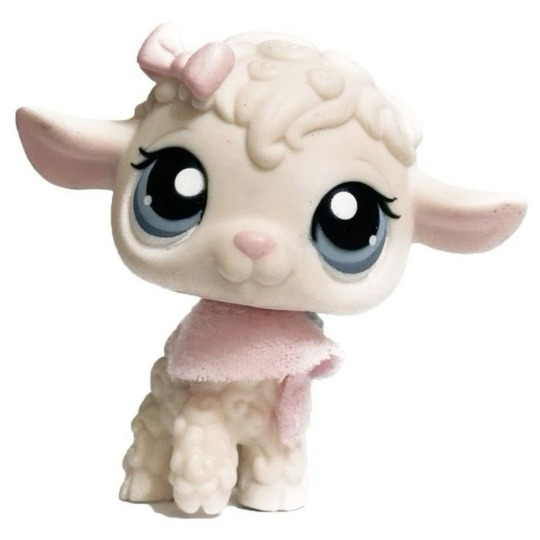



✩ everyone i write for might not be in my masterlist yet because i haven’t published anything about them — but that doesn’t mean i won’t
✩ i generally only write for female readers, so if you want anything else specify so in your request
✩ as long as my requests are open any one of these characters are available to send in!

˗ˏˋʚ SKINS UK ɞˎˊ˗
gen two —
cook, freddie, jj, effy, emily, naomi, katie
gen three —
rich, alo, nick, mini, grace (but basically anyone because it’s my favorite gen)

˗ˏˋʚ THE BIG BANG THEORY ɞˎˊ˗
general tbbt —
sheldon, raj, howard, leonard, bernadette, amy, penny, stuart
young sheldon —
romantic; georgie, mary, pastor rob, connie
platonic; missy, sheldon

˗ˏˋʚ MISCELLANEOUS ɞˎˊ˗
male —
austin!elvis, benedict bridgerton, steve harrington, eddie munson, rory!euro, carl grimes, carl gallagher, lip gallagher, phil dunphy, luke dunphy, leo!jim carroll, cillian!oppenheimer, harry potter, ron weasley, mike wheeler, neteyam sully, jj maybank, james maguire
female —
daphne bridgerton, eloise bridgerton, violet bridgerton, nancy wheeler, robin buckley, fiona gallagher, haley dunphy, clare dunphy, gloria pritchett, blair waldorf, ginny weasley, hermione granger, fiona goode, zoe benson, madison montgomery, misty day, beth harmon, michelle mallon, orla mccool, clare devlin, erin quinn


#qtkat#x reader#x reader masterlist#bridgerton x reader#stranger things x reader#skins uk x reader#avatar x reader#gossip girl x reader#american horror story x reader#elvis presley x reader#robert oppenheimer x reader#jim carroll x reader#modern family x reader#harry potter x reader#shameless x reader#outer banks x reader#the queen’s gambit x reader#derry girls x reader
51 notes
·
View notes
Text
Ryu Number: Alice (i.e. of Wonderland)
Okay, I know what you're thinking. K.C., are you really churning out a post on Alice's Ryu Number? Sora is in Smash, for goodness' sake. That's Kingdom Hearts, which gets you the Disney version split-lickety.
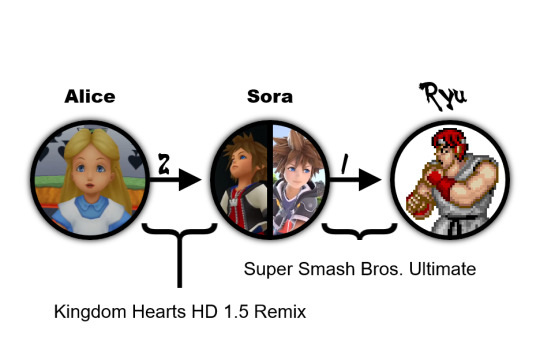
Yeah, that's true. And it would be perfectly reasonable to shut the book on the matter right there and shout, "Problem solved!" But here's a question: Are Alice of Wonderland and Alice Liddell the same person?
That's a rhetorical question, by the way. If a century of Alicologists aren't going to come to an agreement, an opinion off the end of a tumblr post is unlikely to set off a scholarly paradigm shift. For what it's worth, Lewis Carroll himself seemed to consider Liddell and the literary Alice as separate individuals—the latter as more of an idealization than any real person*—but he's got some investment in the matter, so he's not exactly a reliable source.
(This is a joke. Don't at me.)
*Woolf, J. (2010). The Mystery of Lewis Carroll. St. Martin's Press.
... But we're not here for literary analysis, of course. We're here for the Ryu Numbers. So what's Alice Liddell's?
The most obvious route, of course, would be through American McGee's American McGee's Alice and Alice: Madness Returns video games. The lore of the second game straight out gives Alice the surname Liddell...

... and the opening cutscene of the first game features a photograph in Alice's bedroom of someone who might be Lewis Carroll (which is a bit weird, but whatever), as well as an Alice storybook (meaning Alice exists one narrative layer higher than the literary Alice).
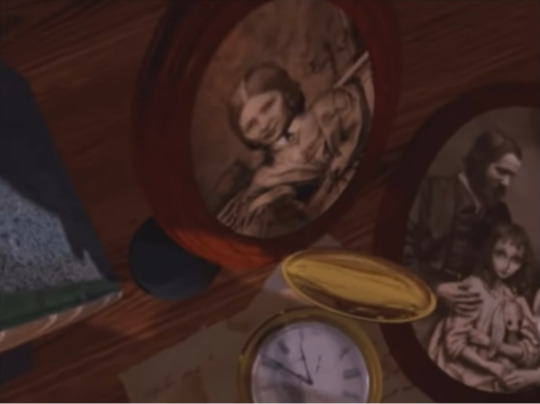

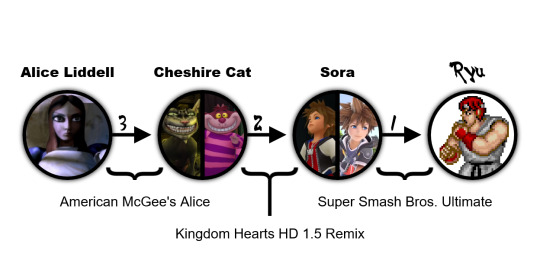
...That said, if American McGee did mean for the game Alice Liddell to be the Alice Liddell, that's something it looks like he walked back in game two (or at least went in with plausible deniability about). Game Alice seems to have had just the one sibling, an older sister named Elizabeth, and her father's name was Arthur—the real Alice, on the other hand, had nine siblings in all (jeez), with her only older sister named Lorina and her father named Henry.
(Also all the Wonderland elements explicitly take place in Alice's head, which means technically we shouldn't be counting Wonderland characters any more than we'd count characters that show up in dreams or hallucinations, but I'll pretend not to notice if you pretend not to notice, alright? Call it the Code Name: S.T.E.A.M. precedent.)
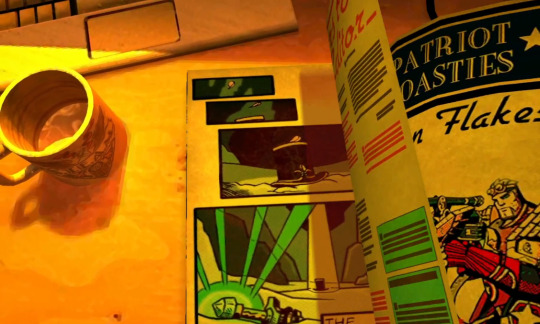
To get to something plausibly Liddeller, I'ma jump back to the Apple II/Commodore 64 era.
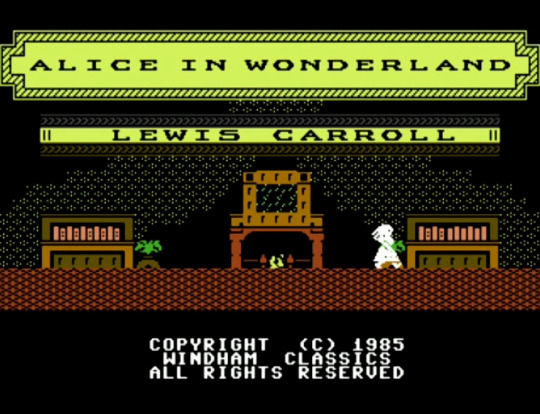
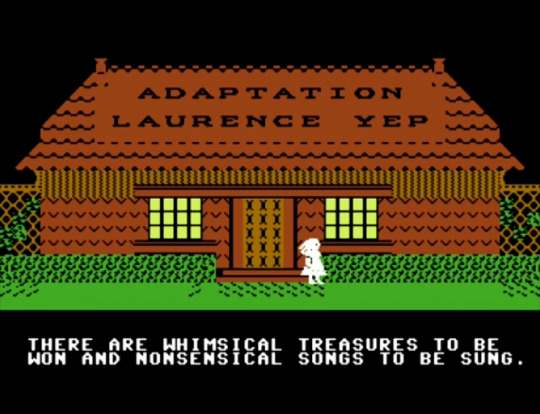
Wait, the Laurence Yep? Aunno, maybe! I wrote to him once, because I wanted to know if the Charles Edward Stuart that appears in this game is actually Charles Edward Stuart, or just the White King believing himself to be Charles Edward Stuart, both of which seemed likely enough to me given the setting.
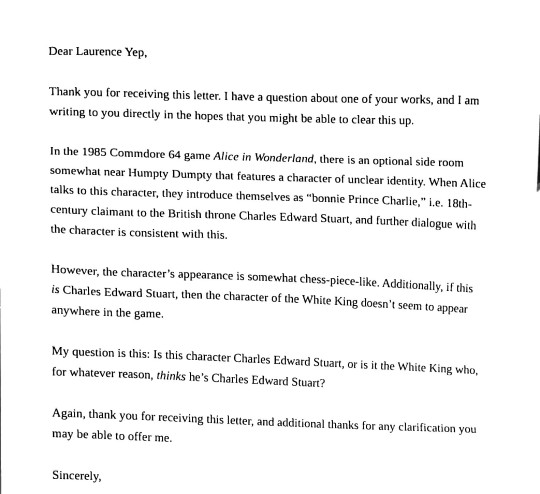
I never got an answer back, probably because I couldn't find any contact info for Laurence Yep and ended up writing to the most recent publisher of his works I could find instead. What I'm saying is that I doubt Mr. Yep ever laid eyes on my letter before it was slam-dunked into the nearest wastebin (Mr. Yep if you are reading this please DM me).
Anyway, shortly before Alice falls into the rabbit hole, gets swept up in the usual Wonderland annoyances, then finally makes her way up and out the same rabbit hole (i.e. no "it was all a dream," it's happening for realsies), Alice runs into a dude on a boat. It's Lewis Carroll, and you know he's Lewis Carroll because he says he's Lewis Carroll.
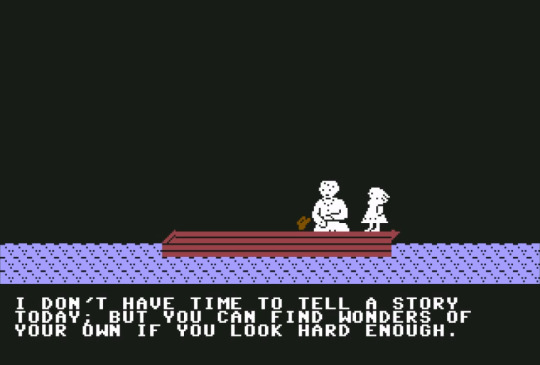
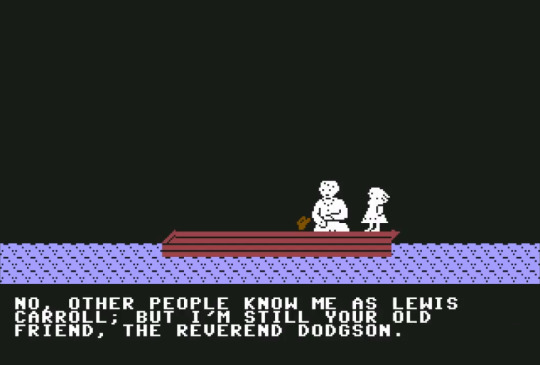
Add that that he's a teller of stories to this Alice, and and it serves as good implication as any that the player character is the historical Alice Liddell.
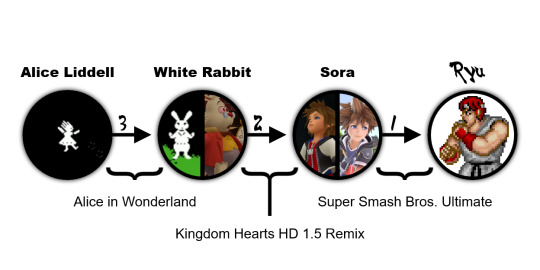
#ryu number#alice#alice liddell#ryu#super smash bros. ultimate#sora#kingdom hearts#kingdom hearts hd 1.5 remix#cheshire cat#american mcgee's alice#white rabbit#alice in wonderland
113 notes
·
View notes
Text
A group of current and former OpenAI employees have issued a public letter warning that the company and its rivals are building artificial intelligence with undue risk, without sufficient oversight, and while muzzling employees who might witness irresponsible activities.
“These risks range from the further entrenchment of existing inequalities, to manipulation and misinformation, to the loss of control of autonomous AI systems potentially resulting in human extinction,” reads the letter published at righttowarn.ai. “So long as there is no effective government oversight of these corporations, current and former employees are among the few people who can hold them accountable.”
The letter calls for not just OpenAI but all AI companies to commit to not punishing employees who speak out about their activities. It also calls for companies to establish “verifiable” ways for workers to provide anonymous feedback on their activities. “Ordinary whistleblower protections are insufficient because they focus on illegal activity, whereas many of the risks we are concerned about are not yet regulated,” the letter reads. “Some of us reasonably fear various forms of retaliation, given the history of such cases across the industry.”
OpenAI came under criticism last month after a Vox article revealed that the company has threatened to claw back employees’ equity if they do not sign non-disparagement agreements that forbid them from criticizing the company or even mentioning the existence of such an agreement. OpenAI’s CEO, Sam Altman, said on X recently that he was unaware of such arrangements and the company had never clawed back anyone’s equity. Altman also said the clause would be removed, freeing employees to speak out.
OpenAI has also recently changed its approach to managing safety. Last month, an OpenAI research group responsible for assessing and countering the long-term risks posed by the company’s more powerful AI models was effectively dissolved after several prominent figures left and the remaining members of the team were absorbed into other groups. A few weeks later, the company announced that it had created a Safety and Security Committee, led by Altman and other board members.
Last November, Altman was fired by OpenAI’s board for allegedly failing to disclose information and deliberately misleading them. After a very public tussle, Altman returned to the company and most of the board was ousted.
“We’re proud of our track record providing the most capable and safest AI systems and believe in our scientific approach to addressing risk,” said OpenAI spokesperson Liz Bourgeois in a statement. “We agree that rigorous debate is crucial given the significance of this technology and we'll continue to engage with governments, civil society and other communities around the world.”
The letters’ signatories include people who worked on safety and governance at OpenAI, current employees who signed anonymously, and researchers who currently work at rival AI companies. It was also endorsed by several big-name AI researchers including Geoffrey Hinton and Yoshua Bengio, who both won the Turing Award for pioneering AI research, and Stuart Russell, a leading expert on AI safety.
Former employees to have signed the letter include William Saunders, Carroll Wainwright, and Daniel Ziegler, all of whom worked on AI safety at OpenAI.
“The public at large is currently underestimating the pace at which this technology is developing,” says Jacob Hilton, a researcher who previously worked on reinforcement learning at OpenAI and who left the company more than a year ago to pursue a new research opportunity. Hilton says that although companies like OpenAI commit to building AI safely, there is little oversight to ensure that is the case. “The protections that we’re asking for, they’re intended to apply to all frontier AI companies, not just OpenAI,” he says.
“I left because I lost confidence that OpenAI would behave responsibly,” says Daniel Kokotajlo, a researcher who previously worked on AI governance at OpenAI. “There are things that happened that I think should have been disclosed to the public,” he adds, declining to provide specifics.
Kokotajlo says the letter’s proposal would provide greater transparency, and he believes there’s a good chance that OpenAI and others will reform their policies given the negative reaction to news of non-disparagement agreements. He also says that AI is advancing with worrying speed. “The stakes are going to get much, much, much higher in the next few years, he says, “at least so I believe.”
13 notes
·
View notes
Text
Veteran British born/based film/TV actors born before and including 1937 still alive:
With the recent death of Dame Maggie Smith, I thought I'd detail the legendary actors of UK cinema and television that are still living as of the date of this post:
Eileen Bennett (b. 1919)
Beulah Garrick (b. 1921)
Elizabeth Kelly (b. 1921)
Elisabeth Kirkby (b. 1921)
Sara Luzita (b. 1922)
Annabel Maule (b. 1922)
Paul Harding (b. 1923)
Vincent Ball (b. 1923)
David Lawton (b. 1923)
Anne Vernon (b. 1924)
Donald Pelmear (b. 1924)
Laurie Webb (b. 1924)
Thelma Ruby (b. 1925)
Pete Murray (b. 1925)
Michael Beint (b. 1925)
Shelia Mitchell (b. 1925)
Kerima (b. 1925)
David Attenborough (b. 1926)
Elizabeth Benson (b. 1926)
Margaret Barton (b. 1926)
Terry Kilburn (b. 1926)
Stanley Baxter (b. 1926)
David Frankham (b. 1926)
William Glover (b. 1926)
Josephine Stuart (b. 1926)
Patricia Davidson (b. 1926)
Glen Michael (b. 1926)
Araby Lockhart (b. 1926)
Eileen Page (b. 1926)
Rosemary Harris (b. 1927)
Cleo Laine (b. 1927)
Lee Montague (b. 1927)
Genevieve Page (b. 1927)
Neville Phillips (b. 1927)
Jean Lodge (b. 1927)
Barbara Ashcroft (b. 1927)
Jill Freud (b. 1927)
Jean Southern (b. 1927)
Antonia Pemberton (b. 1927)
Peter Cellier (b. 1928)
Jeanette Landis (b. 1928)
Sheila Ballantine (b. 1928)
Dorothea Phillips (b. 1928)
Jeannie Carson (b. 1928)
Hazel Ascot (b. 1928)
Brenda Hogan (b. 1928)
Raymond Llewelyn (b. 1928)
Pauline Brailsford (b. 1928)
Leonard Weir (b. 1928)
Kevin Scott (b. 1928)
Patricia Routledge (b. 1929)
Colin Jeavons (b. 1929)
Michael Craig (b. 1929)
Thelma Barlow (b. 1929)
Peter Myers (b. 1929)
Paul Williamson (b. 1929)
John Gale (b. 1929)
Phillip Ross (b. 1929)
Jimmy Fagg (b. 1929)
Hazel Phillips (b. 1929)
Mignon Elkins (b. 1929)
Margaret Stallard (b. 1929)
Maya Koumani (b. 1929)
Clive Revill (b. 1930)
Roy Evans (b. 1930)
Una McLean (b. 1930)
Roddy Maude-Roxby (b. 1930)
Ruth Trouncer (b. 1930)
Cyril Appleton (b. 1930)
Vera Frances (b. 1930)
Gary Watson (b. 1930)
Keith Alexander (b. 1930)
Libby Morris (b. 1930)
Pauline Jefferson (b. 1930)
Claire Bloom (b. 1931)
Leslie Caron (b. 1931)
Carroll Baker (b. 1931)
Virginia McKenna (b. 1931)
Vivian Pickles (b. 1931)
Stanley Meadows (b. 1931)
Gerald Harper (b. 1931)
Patricia Greene (b. 1931)
Ellen McIntosh (b. 1931)
Elvi Hale (b. 1931)
Maureen Connell (b. 1931)
June Laverick (b. 1931)
James Martin (b. 1931)
Denyse Alexander (b. 1931)
Arthur Nightingale (b. 1931)
Eileen Derbyshire (b. 1931)
Carl Held (b. 1931)
Shelia Bernette (b. 1931)
George Eugeniou (b. 1931)
Corinne Skinner-Carter (b. 1931)
Tusse Silberg (b. 1931)
Petula Clark (b. 1932)
Prunella Scales (b. 1932)
Phyllida Law (b. 1932)
Ray Cooney (b. 1932)
Edward De Souza (b. 1932)
Alan Dobie (b. 1932)
John Turner (b. 1932)
Roland Curram (b. 1932)
Gabriel Woolf (b. 1932)
Johnnie Wade (b. 1932)
Eileen Moore (b. 1932)
Laurie Leigh (b. 1932)
William Roache (b. 1932)
Athol Fugard (b. 1932)
Carmen Munroe (b. 1932)
Norman Bowler (b. 1932)
Marcia Ashton (b. 1932)
Thelma Holt (b. 1932)
Sally Bazely (b. 1932)
Ronald France (b. 1932)
Edwina Carroll (b. 1932)
Michael Caine (b. 1933)
Joan Collins (b. 1933)
Sian Phillips (b. 1933)
Sheila Hancock (b. 1933)
Elizabeth Seal (b. 1933)
Shani Willis (b. 1933)
Patrick Godfrey (b. 1933)
Caroline Blakiston (b. 1933)
Donald Douglas (b. 1933)
Ann Firbank (b. 1933)
Vera Day (b. 1933)
Tsai Chin (b. 1933)
Geoffrey Frederick (b. 1933)
Marla Landi (b. 1933)
Monte Landis (b. 1933)
Mary Germaine (b. 1933)
Ruth Posner (b. 1933)
Barbara Archer (b. 1933)
W.B. Brydon (b. 1933)
Robert Gillespie (b. 1933)
Brian Patton (b. 1933)
Arthur White (b. 1933)
Barbara Archer (b. 1933)
Sally Bazley (b. 1933)
Madhur Jaffrey (b. 1933)
Jeanette Sterke (b. 1933)
Ann Rogers (b. 1933)
Barbara Knox (b. 1933)
John Boorman (b. 1933)
Derek Martin (b. 1933)
Michael Aspel (b. 1933)
Bill Edwards (b. 1933)
Ninette Finch (b. 1933)
Una Kay (b. 1933)
Pat Galloway (b. 1933)
Judi Dench (b. 1934)
Eileen Atkins (b. 1934)
Tom Baker (b. 1934)
Alan Bennett (b. 1934)
Jean Marsh (b. 1934)
Annette Crosbie (b. 1934)
Wendy Craig (b. 1934)
Richard Chamberlain (b. 1934)
Millicent Martin (b. 1934)
John Standing (b. 1934)
Vernon Dobtcheff (b. 1934)
Nanette Newman (b. 1934)
David Burke (b. 1934)
Mary Peach (b. 1934)
Geraldine Newman (b. 1934)
Renny Lister (b. 1934)
Priscilla Morgan (b. 1934)
Audrey Dalton (b. 1934)
Leila Hoffman (b. 1934)
Simone Lovell (b. 1934)
Magda Miller (b. 1934)
Robert Aldous (b. 1934)
Ram John Holder (b. 1934)
Jamila Massey (b. 1934)
Margaretta D’Arcy (b. 1934)
Leslie Saeward (b. 1934)
Maurice Podbrey (b. 1934)
Steve Emerson (b. 1934)
Peter Bland (b. 1934)
Michael Darlow (b. 1934)
Barbara Archer (b. 1934)
Joy Webster (b. 1934)
Jacqueline Ellis (b. 1934)
Jacqueline Jones (b. 1934)
Diana Payan (b. 1934)
Julie Andrews (b. 1935)
Julian Glover (b. 1935)
Jim Dale (b. 1935)
Anne Reid (b. 1935)
James Bolam (b. 1935)
Christina Pickles (b. 1935)
Judy Parfitt (b. 1935)
Wanda Ventham (b. 1935)
Amanda Barrie (b. 1935)
Derren Nesbitt (b. 1935)
Nadim Swalha (b. 1935)
Gary Raymond (b. 1935)
Janet Henfrey (b. 1935)
Melvyn Hayes (b. 1935)
Susan Engel (b. 1935)
Amanda Walker (b. 1935)
Delena Kidd (b. 1935)
Derek Partridge (b. 1935)
Allister Bain (b. 1935)
Derry Power (b. 1935)
Phyllis MacMahon (b. 1935)
Rowena Cooper (b. 1935)
Lisa Gastoni (b. 1935)
Derek Partridge (b. 1935)
Jill Dixon (b. 1935)
Des Keough (b. 1935)
Barbara Angell (b. 1935)
Lucille Soong (b. 1935)
Anita West (b. 1935)
June Watson (b. 1935)
David Daker (b. 1935)
Shirley Cain (b. 1935)
Bobby Pattinson (b. 1935)
George Roubicek (b. 1935)
Glenn Beck (b. 1935)
Shirley Greenwood (b. 1935)
Isabella Rye (b. 1935)
Anna Barry (b. 1935)
David Andrews (b. 1935)
Michael Danvers-Walker (b. 1935)
Brian Blessed (b. 1936)
Richard Wilson (b. 1936)
Tommy Steele (b. 1936)
Edward Petherbridge (b. 1936)
Ursula Andress (b. 1936)
John Leyton (b. 1936)
Jess Conrad (b. 1936)
Elizabeth Shepherd (b. 1936)
Sandra Voe (b. 1936)
Doug Sheldon (b. 1936)
John Golightly (b. 1936)
Peter Ellis (b. 1936)
Andria Lawrence (b. 1936)
Jon Laurimore (b. 1936)
Tony Scoggo (b. 1936)
Barry MacGregor (b. 1936)
Frank Barrie (b. 1936)
Kenneth Farrington (b. 1936)
Eileen McCallum (b. 1936)
Frederick Pyne (b. 1936)
Philip Lowrie (b. 1936)
Marian Diamond (b. 1936)
Anthony Higginson (b. 1936)
Elsie Kelly (b. 1936)
Ann Taylor (b. 1936)
Heidi Erich (b. 1936)
Keith Faulkner (b. 1936)
Ruth Meyers (b. 1936)
Julia Blake (b. 1936)
Heather Downham (b. 1936)
Robin Gammell (b. 1936)
Auriol Smith (b. 1936)
Frances White (b. 1936)
Anthony Hopkins (b. 1937)
Edward Fox (b. 1937)
Vanessa Redgrave (b. 1937)
Tom Courtenay (b. 1937)
Steven Berkoff (b. 1937)
Susan Hampshire (b. 1937)
Barbara Steele (b. 1937)
Shirley Eaton (b. 1937)
Kenneth Colley (b. 1937)
Ian Hogg (b. 1937)
Sheila Reid (b. 1937)
Valerie Singleton (b. 1937)
Suzy Kendall (b. 1937)
Gawn Grainger (b. 1937)
Tom Georgeson (b. 1937)
Alan Rothwell (b. 1937)
Michael Knowles (b. 1937)
Jocelyn Lane (b. 1937)
Michael Kilgarriff (b. 1937)
Clifton Jones (b. 1937)
Paul Collins (b. 1937)
Anna Dawson (b. 1937)
Marlene Sidaway (b. 1937)
Jeremy Spenser (b. 1937)
Freddie Davies (b. 1937)
Justine Lord (b. 1937)
Davyd Harries (b. 1937)
Hugh Futcher (b. 1937)
Anne Cunningham (b. 1937)
Anne Aubrey (b. 1937)
Vic Taliban (b. 1937)
Dorothy Paul (b. 1937)
Denis Tuohy (b. 1937)
Claire Neilson (b. 1937)
Patricia Collins (b. 1937)
Jan Waters (b. 1937)
Dorothy Paul (b. 1937)
Brian Grellis (b. 1937)
Kenneth Alan Taylor (b. 1937)
Yvonne Buckingham (b. 1937)
Eileen Helsby (b. 1937)
Ray Donn (b. 1937)
Terrence Scammell (b. 1937)
Pauline Devaney (b. 1937)
Rosie Bannister (b. 1937)
Jeanne Roland (b. 1937)
William Gaunt (b. 1937)
Rosaleen Linehan (b. 1937)
Norman Coburn (b. 1937)
Rosie Bannister (b. 1937)
Luciana Paluzzi (b. 1937)
#dannyreviews#uk#british actors#judi dench#eileen atkins#rosemary harris#brian blessed#julie andrews#michael caine#joan collins#petula clark#david attenborough#richard chamberlain#carroll baker#claire bloom#tom baker#ursula andress#anthony hopkins#vanessa redgrave#tom courtenay#edward fox
5 notes
·
View notes
Text
Literary Canon (from kissgrammar)
The Holy Bible, Authorized King James Version [At a minimum, the books of Genesis, Exodus, Job, Psalms, from the Old Testament; Matthew, Mark, Luke, John, and Apocalypse from the New.] Whether or not you are Christian is irrelevant. The civilization in which we live is based on and permeated by the ideas and values expressed in this book. Understanding our civilization, the world in which we live, is probably impossible without having read -- and thought about -- at least the most famous books in the Bible. Historically, the King James Version is considered the most artistic, and thus has probably had the most literary influence.
Homer, The Iliad
Homer, The Odyssey
Sophocles, Oedipus the King (Oedipus Rex)
Sophocles, Antigone
Plato, The Republic, especially "The Myth of the Cave"
Ovid, Metamorphoses
Saint Augustine, The Confessions
Dante, The Divine Comedy
Giovanni Boccaccio, The Decameron
Niccolo Machiavelli, The Prince
Giambattista Vico, Principles of a New Science
Miguel de Cervantes, Don Quixote
Geoffrey Chaucer, The Canterbury Tales
Romeo and Juliet
King Lear
Hamlet
Othello
Macbeth
John Donne, "Holy Sonnet XIV"
John Donne, "A Valediction Forbidding Mourning"
Andrew Marvell, "To His Coy Mistress"
John Milton, Paradise Lost
Jonathan Swift, Gulliver's Travels
A Modest Proposal
Daniel Defoe, Robinson Crusoe
Laurence Sterne, The Life and Opinions of Tristram Shandy, Gentleman
Michel de Montaigne, Essays, especially "Of Experience"
Francois Rabelais, Gargantua and Pantagruel
Moliere, The Misanthrope
Blaise Pascal, Pensees
Jean-Jacques Rousseau, Emile
Voltaire, Candide
Erasmus, In Praise of Folly
Johann Wolfgang von Goethe, Faust, Parts One & Two
Honore de Balzac, Old Goriot (also translated as Pere Goriot)
Stendhal, The Red and the Black
Gustave Flaubert, Madame Bovary
Emile Zola, Germinal
Henrik Ibsen, A Doll's House
William Blake
William Wordsworth
Jane Austen, Pride and Prejudice
Lord Byron, Don Juan
John Keats, "Ode on a Grecian Urn"
Robert Browning, "My Last Duchess"
Charles Dickens - Oliver Twist
A Tale Of Two Cities
Hard Times
A Christmas Carol
Matthew Arnold, "Dover Beach"
John Stuart Mill, On Liberty
Lewis Carroll, Alice in Wonderland
Charlotte Bronte, Jane Eyre
Emily Bronte, Wuthering Heights
Francis Thompson, "The Hound of Heaven"
Samuel Butler, Erewhon
Oscar Wilde, The Picture of Dorian Gray
George Eliot- Silas Marner
Middlemarch
Robert Louis Stevenson, Dr. Jekyll and Mr. Hyde
Friedrich Nietzsche - Beyond Good and Evil
The Will To Power
The Birth of Tragedy
On the Genealogy of Morals
Alexander Pushkin - Eugene Onegin
The Bronze Horseman
Nikolai Gogol -The Overcoat
Dead Souls
Mikhail Lermontov, A Hero of Our Time
Ivan Turgenev, Fathers and Sons
Fyodor Dostoevsky -Notes From the Underground
Crime and Punishment
Leo Tolstoy -The Death of Ivan Ilych
War and Peace
Anton Chekhov, The Cherry Orchard
James Fenimore Cooper, The Deerslayer
Ralph Waldo Emerson, Essays
Emily Dickinson - "Because I Could Not Stop For Death"
"The Tint I Cannot Take"
"There's a Certain Slant of Light"
Walt Whitman - "Song of Myself"
"The Sleepers"
"Crossing Brooklyn Ferry"
"As I Ebbed With The Ocean of Life"
"Out of the Cradle Endlessly Rocking"
"When Lilacs Last in the Dooryard Bloomd"
Nathaniel Hawthorne - Young Goodman Brown
The Scarlet Letter
Herman Melville, Moby-Dick
Edgar Allen Poe - "The Raven"
The Cask of Amontillado
Henry David Thoreau, Walden
Kate Chopin -The Story of An Hour
The Awakening
Stephen Crane, The Red Badge of Courage
Henry James
Mark Twain, The Adventures of Huckleberry Finn
Luigi Pirandello
11 notes
·
View notes
Note
Normal people: Math can only be used in science, computers and physics.
Lewis Carrol: Bet. *proceeds to write Alice in wonderland and the sequel*
What was this man ON?? How many articles did you had to go about math for those Twst theories? Is NUTS how a man uses math for writing. But hey, he knew his way, that’s for sure.
Hello anon! Sorry I just replied to you my social battery has been drained so much lately and I have been busy with work as well
Beats me I've read many books especially the older literatures that only God knows how much I've read since I didn't count it, but mostly I read history, philosophy, mythology, theosophy and mathematical books, in addition to Charles Dodgson (Lewis Carroll's real name) diary and letters which was published by his nephew, Stuart Dodgson Collingwood in 1898
But based on his diary, Lewis Carroll himself wrote the story for about 2-3 years until it's finally completed so you can see why it's really complex especially when the man who wrote it was a logician and mathematician
11 notes
·
View notes